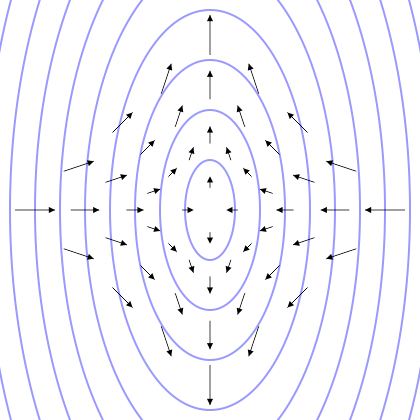|
Gravitational Scattering
Gravitational scattering is the alteration of trajectories when two or more celestial objects exchange energy and momentum through close gravitational encounters. This process underpins many dynamical phenomena in astrophysics, from the formation of binary star systems to the ejection of bodies from planetary systems. When objects like stars, planets, or black holes pass close enough to influence each other’s motions, their paths can shift dramatically. Close passages between massive objects—such as stars, planets, or black holes—can produce either bound pairs or unbound ejecta. An example is Jupiter scattering Kuiper belt objects out of the Solar System. Observing gravitational scattering Researchers investigate gravitational-scattering events with -body simulations and other numerical models of gravitational fields and gravitational field interactions. A key aspect is the exchange of energy and momentum between the bodies. For example, a fast body can impart kine ... [...More Info...] [...Related Items...] OR: [Wikipedia] [Google] [Baidu] |
Kinetic Energy
In physics, the kinetic energy of an object is the form of energy that it possesses due to its motion. In classical mechanics, the kinetic energy of a non-rotating object of mass ''m'' traveling at a speed ''v'' is \fracmv^2.Resnick, Robert and Halliday, David (1960) ''Physics'', Section 7-5, Wiley International Edition The kinetic energy of an object is equal to the work, or force ( F) in the direction of motion times its displacement ( s), needed to accelerate the object from rest to its given speed. The same amount of work is done by the object when decelerating from its current speed to a state of rest. The SI unit of energy is the joule, while the English unit of energy is the foot-pound. In relativistic mechanics, \fracmv^2 is a good approximation of kinetic energy only when ''v'' is much less than the speed of light. History and etymology The adjective ''kinetic'' has its roots in the Greek word κίνησις ''kinesis'', meaning "motion". The dichoto ... [...More Info...] [...Related Items...] OR: [Wikipedia] [Google] [Baidu] |
Uranus
Uranus is the seventh planet from the Sun. It is a gaseous cyan-coloured ice giant. Most of the planet is made of water, ammonia, and methane in a Supercritical fluid, supercritical phase of matter, which astronomy calls "ice" or Volatile (astrogeology), volatiles. Atmosphere of Uranus, The planet's atmosphere has a complex layered cloud structure and has the lowest minimum temperature () of all the Solar System's planets. It has a marked axial tilt of 82.23° with a Retrograde and prograde motion, retrograde rotation period of 17 hours and 14 minutes. This means that in an 84-Earth-year orbital period around the Sun, its poles get around 42 years of continuous sunlight, followed by 42 years of continuous darkness. Uranus has the third-largest diameter and fourth-largest mass among the Solar System's planets. Based on current models, inside its volatile Mantle (geology), mantle layer is a rocky core, and surrounding it is a thick hydrogen and helium atmosphere. Trace amount ... [...More Info...] [...Related Items...] OR: [Wikipedia] [Google] [Baidu] |
Protoplanetary Disk
A protoplanetary disk is a rotating circumstellar disc of dense gas and dust surrounding a young newly formed star, a T Tauri star, or Herbig Ae/Be star. The protoplanetary disk may not be considered an accretion disk; while the two are similar, an accretion disk is hotter and spins much faster; it is also found on black holes, not stars. This process should not be confused with the accretion process thought to build up the planets themselves. Externally illuminated photo-evaporating protoplanetary disks are called proplyds. Formation Protostars form from molecular clouds consisting primarily of molecular hydrogen. When a portion of a molecular cloud reaches a critical size, mass, or density, it begins to collapse under its own gravity. As this collapsing cloud, called a solar nebula, becomes denser, random gas motions originally present in the cloud average out in favor of the direction of the nebula's net angular momentum. Conservation of angular momentum causes the r ... [...More Info...] [...Related Items...] OR: [Wikipedia] [Google] [Baidu] |
General Relativity
General relativity, also known as the general theory of relativity, and as Einstein's theory of gravity, is the differential geometry, geometric theory of gravitation published by Albert Einstein in 1915 and is the current description of gravitation in modern physics. General theory of relativity, relativity generalizes special relativity and refines Newton's law of universal gravitation, providing a unified description of gravity as a geometric property of space and time in physics, time, or four-dimensional spacetime. In particular, the ''curvature of spacetime'' is directly related to the energy and momentum of whatever is present, including matter and radiation. The relation is specified by the Einstein field equations, a system of second-order partial differential equations. Newton's law of universal gravitation, which describes gravity in classical mechanics, can be seen as a prediction of general relativity for the almost flat spacetime geometry around stationary mass ... [...More Info...] [...Related Items...] OR: [Wikipedia] [Google] [Baidu] |
Newtonian Mechanics
Newton's laws of motion are three physical laws that describe the relationship between the motion of an object and the forces acting on it. These laws, which provide the basis for Newtonian mechanics, can be paraphrased as follows: # A body remains at rest, or in motion at a constant speed in a straight line, unless it is acted upon by a force. # At any instant of time, the net force on a body is equal to the body's acceleration multiplied by its mass or, equivalently, the rate at which the body's momentum is changing with time. # If two bodies exert forces on each other, these forces have the same magnitude but opposite directions. The three laws of motion were first stated by Isaac Newton in his '' Philosophiæ Naturalis Principia Mathematica'' (''Mathematical Principles of Natural Philosophy''), originally published in 1687. Newton used them to investigate and explain the motion of many physical objects and systems. In the time since Newton, new insights, especially around ... [...More Info...] [...Related Items...] OR: [Wikipedia] [Google] [Baidu] |
Laser Interferometer Gravitational-Wave Observatory
The Laser Interferometer Gravitational-Wave Observatory (LIGO) is a large-scale physics experiment and observatory designed to detect cosmic gravitational waves and to develop gravitational-wave observations as an astronomical tool. Prior to LIGO, all data about the universe has come in the form of light and other forms of electromagnetic radiation, from limited direct exploration on relatively nearby Solar System objects such as the Moon, Mars, Venus, Jupiter and their moons, asteroids etc, and from high energy cosmic particles. Initially, two large observatories were built in the United States with the aim of detecting gravitational waves by laser interferometry. Two additional, smaller gravity wave observatories are now operational in Japan (KAGRA) and Italy (Virgo). The two LIGO observatories use mirrors spaced four kilometers apart to measure changes in length—over an effective span of 1120 km—of less than one ten-thousandth the charge diameter of a proton. (that is, t ... [...More Info...] [...Related Items...] OR: [Wikipedia] [Google] [Baidu] |
Gravitational Waves
Gravitational waves are oscillations of the gravitational field that travel through space at the speed of light; they are generated by the relative motion of gravitating masses. They were proposed by Oliver Heaviside in 1893 and then later by Henri Poincaré in 1905 as the gravitational equivalent of electromagnetic waves. In 1916, Albert Einstein demonstrated that gravitational waves result from his general theory of relativity as ripples in spacetime. Gravitational waves transport energy as gravitational radiation, a form of radiant energy similar to electromagnetic radiation. Newton's law of universal gravitation, part of classical mechanics, does not provide for their existence, instead asserting that gravity has instantaneous effect everywhere. Gravitational waves therefore stand as an important relativistic phenomenon that is absent from Newtonian physics. Gravitational-wave astronomy has the advantage that, unlike electromagnetic radiation, gravitational waves are not a ... [...More Info...] [...Related Items...] OR: [Wikipedia] [Google] [Baidu] |
Binary Stars
A binary star or binary star system is a system of two stars that are gravitationally bound to and in orbit around each other. Binary stars in the night sky that are seen as a single object to the naked eye are often resolved as separate stars using a telescope, in which case they are called ''visual binaries''. Many visual binaries have long orbital periods of several centuries or millennia and therefore have orbits which are uncertain or poorly known. They may also be detected by indirect techniques, such as spectroscopy (''spectroscopic binaries'') or astrometry (''astrometric binaries''). If a binary star happens to orbit in a plane along our line of sight, its components will eclipse and transit each other; these pairs are called ''eclipsing binaries'', or, together with other binaries that change brightness as they orbit, ''photometric binaries''. If components in binary star systems are close enough, they can gravitationally distort each other's outer stellar atmospheres. ... [...More Info...] [...Related Items...] OR: [Wikipedia] [Google] [Baidu] |
Hypervelocity Stars
In astronomy, stellar kinematics is the Observational astronomy, observational study or measurement of the kinematics or motions of stars through space. Stellar kinematics encompasses the measurement of stellar Velocity, velocities in the Milky Way and its Satellite galaxies of the Milky Way, satellites as well as the internal kinematics of more distant Galaxy, galaxies. Measurement of the kinematics of stars in different subcomponents of the Milky Way including the thin disk, the thick disk, the Bulge (astronomy), bulge, and the stellar halo provides important information about the formation and evolutionary history of our Galaxy. Kinematic measurements can also identify exotic phenomena such as hypervelocity stars escaping from the Milky Way, which are interpreted as the result of gravitational encounters of binary stars with the Sagittarius A*, supermassive black hole at the Galactic Center. Stellar kinematics is related to but distinct from the subject of stellar dynamics, wh ... [...More Info...] [...Related Items...] OR: [Wikipedia] [Google] [Baidu] |
Star Clusters
A star cluster is a group of stars held together by self-gravitation. Two main types of star clusters can be distinguished: globular clusters, tight groups of ten thousand to millions of old stars which are gravitationally bound; and open clusters, less tight groups of stars, generally containing fewer than a few hundred members. As they move through the galaxy, over time, open clusters become disrupted by the gravitational influence of giant molecular clouds, so that the clusters we observe are often young. Even though they are no longer gravitationally bound, they will continue to move in broadly the same direction through space and are then known as stellar associations, sometimes referred to as ''moving groups''. Globular clusters, with more members and more mass, remain intact for far longer and the globular clusters we observe are usually billions of years old. Star clusters visible to the naked eye include the Pleiades and Hyades open clusters, and the globular cluster ... [...More Info...] [...Related Items...] OR: [Wikipedia] [Google] [Baidu] |
Active Galactic Nucleus
An active galactic nucleus (AGN) is a compact region at the center of a galaxy that emits a significant amount of energy across the electromagnetic spectrum, with characteristics indicating that this luminosity is not produced by the stars. Such excess, non-stellar emissions have been observed in the radio waves, radio, microwave, infrared, visible spectrum, optical, ultra-violet, X-ray and gamma ray wavebands. A galaxy hosting an AGN is called an active galaxy. The non-stellar radiation from an AGN is theorized to result from the accretion (astrophysics), accretion of matter by a supermassive black hole at the center of its host galaxy. Active galactic nuclei are the most luminous persistent sources of electromagnetic radiation in the universe and, as such, can be used as a means of discovering distant objects; their evolution as a function of cosmic time also puts constraints on cosmology, models of the cosmos. The observed characteristics of an AGN depend on several properties s ... [...More Info...] [...Related Items...] OR: [Wikipedia] [Google] [Baidu] |










